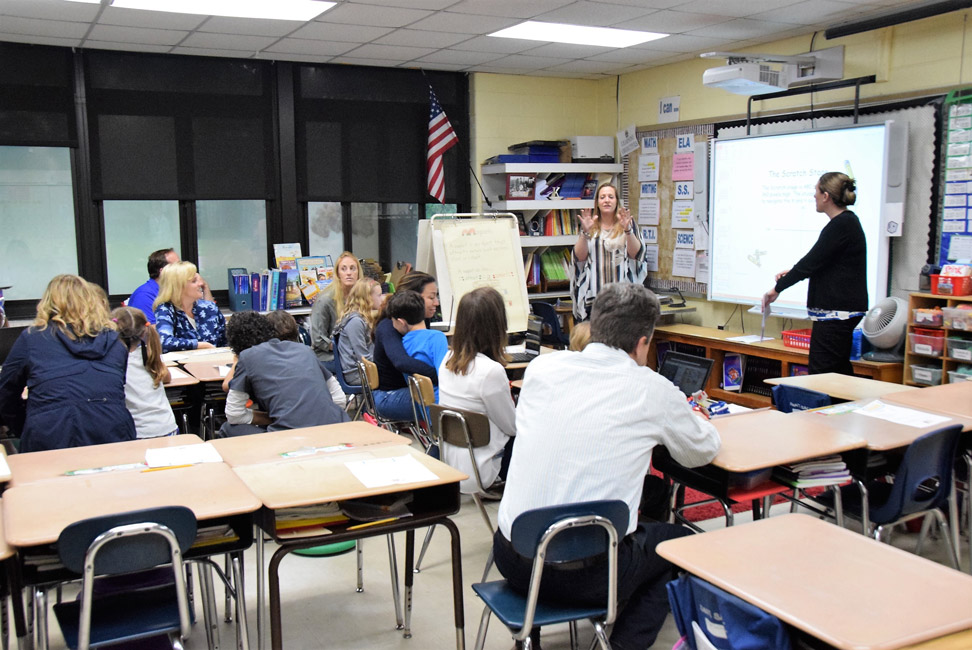Southdown Primary School has been periodically “stepping up its game” since it first opened in September 1954. That same philosophy and willingness to adapt and take on new and modern challenges continues today.
Southdown Principal Scott Oshrin recently organized and helped promote a special night for third grade parents and students on “learning computational thinking.” It’s a mouthful and it isn’t easy to even think about it, but after participating in the workshop the parents had a much better idea of what their children are studying and why it’s important.

Southdown's Scratch coding and computational learning intiative is off to a great start.
The evening featured a focus on Scratch coding. “With Scratch, you can program your own interactive stories, games and animations and share your creations with others in the online community,” according to a web-based profile. “Scratch helps young people learn to think creatively, reason systemically and work collaboratively; essential skills for life in the 21st century. Scratch is designed especially for ages 8-16, but it’s used by people of all ages. The ability to code computer programs is an important part of literacy in today’s society. When people learn to code in Scratch they learn important strategies for solving problems, designing projects and communicating ideas.”
Southdown’s teachers signed onto the initiative early on. An outside consultant provided nine hours of professional development to faculty members that was geared to teach them how to incorporate coding into the core curriculum. The idea was crafted by the teachers themselves.
“I am so fortunate to work with such a creative and forward thinking staff,” Mr. Oshrin said. “They are constantly seeking out ways to engage children in content that is of high interest and value to their development. This endeavor is just one example of how they are always looking to better themselves and their students.”
The hour long parent workshop helped answer the question: Why is computational thinking important to your child? Parents were shown exactly what their children are learning in classrooms. In fact, halfway through the seminar they joined the youngsters in their classrooms to see firsthand what the students were doing.
Southdown, along with the Huntington UFSD in general, is preparing students for what everyone hopes will be a successful future.
The recent workshop highlighted some fascinating statistics:
• Sixty-five percent of future jobs haven’t been created yet.
• There are 10 billion connected devices in use today and it’s expected there will be 50 billion by 2020.
• The demand for technology skills is growing. More than 50 percent of today’s jobs require some type of technology skills and it’s projected that 77 percent of jobs will require technology related skills in less than a decade.
• Computing jobs are the No. 1 source of new wages in the country.
Parents and children worked together on a Scratch coding project during the workshop. It was fun to watch the youngsters take on the role of teacher and guide their parents through the task.
The workshop also helped to highlight just what “computational thinking” with a special focus on these points:
• Decomposition: The ability to break a larger problem down into smaller parts
• Pattern recognition: When you observe similarities and patterns within problems
• Abstraction: When you identify what defines the patterns you see and focus on the important information only
• Algorithmic thinking: When you develop a step-by-step plan or the rules to follow to solve a problem
MIT Scratch Parent Night was presented by Laurie Carey and Jon Garcia, who are working with the school on the initiative. They hope to expand the computational thinking knowledge of third grade teachers; provide strategies for working with different learning needs; support continued learning and resources to build upon the foundational skills.
“It’s my hope to spread this work to the younger grades in the years to come,” Mr. OShrin said. “We are off to a great start.”
